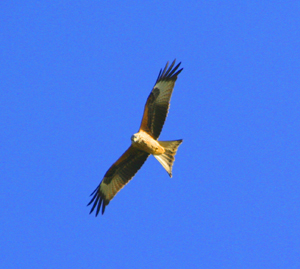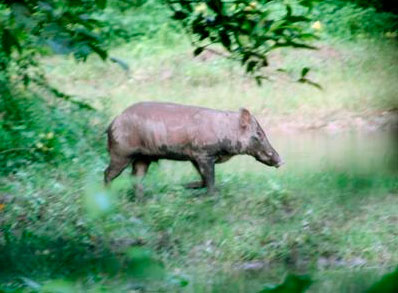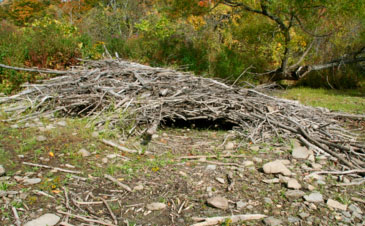Projects
We have a number of projects ongoing now as you will see from the list below. You can access them by clicking on the heading.
REINTRODUCTION OF INDIGENOUS ANIMALS
Society has already driven many indigenous British animals into extinction, so to reverse this dreadful situation FES supports reintroduction programmes whenever appropriate. Present avian reintroduction programmes include the Great Bustard, Red Kite, White Tailed or Sea Eagle, and the Crane: mammals include the Wild Boar and the Beaver. FES also welcomes the reintroduction of a lesser known amphibian, the Pool Frog as well as a remarkable insect, the Large Blue Butterfly.
FES supports these reintroduction plans and programmes because they follow the European Union’s Directive 92/43/EEC Conservation of Natural Habitats and Wild Flora and Fauna (the Habitats and Species Directive) Article 22. With this legislation, as stated in Annex IV, the UK must consider the reintroduction of extinct native species, whenever it is appropriate. Furthermore the 1992 Rio Earth Summit, a declaration which the British government signed, gave us our present orientation.
But to get all of Britain's indigenous animals living in the countryside once more, the British public must want to live inside nature, rather than being disengaged or frightened by it. This is why FES raises awareness of these reintroduction programmes and helps keep the issue at the top of the public’s conservationist agenda
The Great Bustard
Globally Great Bustards are categorised as ‘vulnerable’, with populations declining in many countries. However there are still many grassland habitats remaining where they would increase their numbers if governments and decided to work more closely with conservationists.
Male Bustards are about a third larger than females, reaching up to one metre tall and weighing up to 40 pounds, making them the heaviest flying bird in the world. They live for up to 20 years, so those that do make it through the first year (when up to 4 out of 5 die) could be expected to breed prolifically. However when they are adults, males have a higher mortality rate than females, probably due to them fighting for breeding ‘rights’.
These giant birds became extinct in the British countryside in the 1830s due to overhunting. The UK is obliged under EU legislation to reintroduce animals when and where it is appropriate. Based on a 2003 feasibility study, DEFRA granted a licence for a 10 year reintroduction trial period. Since then the Great Bustard project has been working in Salisbury Plain, Somerset. After a difficult start to the programme, young Bustards have been released with some success and have finally established a number of breeding pairs.
FES will continue to monitor the birds' progress until they establish a Minimum Viable Population (MVP) that will secure its long term survival. FES also supports developing other Great Bustard colonies in different parts of Britain and welcomes the bird back as an important part of British wildlife.
Red Kite
The Red Kite's reintroduction project has been a spectacular success in many parts of the British countryside, and after 20 years has entered its final phase.

As the photograph shows a Red Kite can be identified by its forked tail, its finger tipped wings and its cream and rusty red markings, particularly when it flies overhead. The only bird which it could get mixed up with is the Buzzard, another raptor of a similar size; however their differences are easily seen upon closer inspection.
FES has monitored Red Kites in England, Scotland and Wales with organised walks, with some being in the Chiltern Hills where volunteers have seen as many as 34 birds in the sky at one time. The charity has also witnessed their range steadily increasing over the years from the Oxford – Buckinghamshire border to the urban areas of Uxbridge and North West London. They have even been seen flying regularly over the wildlife garden at the registered offices at Millstream Fork.
Despite these reintroduction successes some kites have been killed by gamekeepers. Persecution continues because birds of prey sometimes feed on smaller birds and can be seen as competition by estate owners for their shooting of game, such as pheasants.
FES is a member of the Partnership for Action Against Wildlife Crime (PAW), and opposes such persecution and other illegal activities that continues in less policed rural areas, especially on large estates. The Wildlife Zone has also published articles on the Red Kite and will re-edit them for an anthology of feature articles entitled The Chronicles of a Conservationist.
The White Tailed or Sea Eagle
The White Tailed or Sea Eagle is also known as the ‘barn door’ because of its huge wings which measure up to 6 feet in length; it also has a large head and a large thick yellow beak. The adult is usually brown except for the slightly paler head and neck, blackish flight feathers, and distinctive white tail.Because some eagles have been known to live for 25 years they can breed for a long time which makes up for having only one or two chicks in a brood. During the 2016 FES expedition we saw a pair in the mountains of Skye as well as one over the sea as it flew from the isle of Rhum towards Soay.
The White Tailed Eagle's diet is varied depending on local habitats and the time of year. Depending on what is readily available their prey includes mammals, birds and fish. However many individuals are scavengers, stealing food from carnivores and other large birds, or eating carrion in the colder winter months when live food is scarce.
In 1975 some eagles were reintroduced to the West coast of mainland Scotland as well as some of the islands including Rhum and Mull. Between 2007 and 2013 they have also been reintroduced to the east coast of Scotland, where they are being monitored. Some early signs are hopeful that they will increase their numbers and territories.
There are more breeding pairs today than at any time since 1975 although there is still a slow reproduction rate. So whilst the Scottish populations are gradually growing, both colonies need more support to establish the eagle as a common species.
FES advocates the re-establishment of an English colony in East Anglia where it once lived. Because FES has studied parallel programmes that have been successful, many believe that this is a feasible reintroduction policy. However, as always the British establishment are keen on their red tape which delays the implementation of such policies and makes for very slow progress.
The Common Crane
The common crane is one of Europe’s largest birds standing over three feet tall and with a wingspan of nearly 7 feet. It is unmistakable, being coloured grey with long thin legs, a large body and long neck. About 400 years ago cranes were common in East Anglia, until it became a scarce visitor because mankind had continually drained their wetland nesting sites and hunting territories.
In the 1970s a small breeding population established itself in the Norfolk Broads which gave the chance for conservationists to increase the colony. Since those years the colony has grown, and have even begun to nest in Suffolk.
Meanwhile the Great Crane project for Somerset Moors and Levels has mixed habitats of wetlands as well as meadows and pastureland. In all, about a hundred birds (mainly eggs or chicks gathered from Germany) will be released by 2015 which should create a Minimum Viable Population (MVP) that is hoped to breed successfully.
FES is monitoring the development of both colonies and are prepared to act accordingly wherever necessary; they will also continue to report on their progress in the media.
The Wild Boar

The Wild Boar first became extinct in Britain about 700 years ago, but was reintroduced for hunting purposes. The last extinction was about 300 years ago for the same reason.
Once again Wild Boar lives in certain parts of the British countryside such as the New Forest and the Forest of Dean. This is not because of a planned reintroduction programme, but as a result of being descendants from farm escapees.
Because the Boar eats crops, they are considered a pest, as is any animal that compromises people’s self interests, however small that interest may be. Even so, in the bigger picture FES believes that Boar benefits the countryside is that they turnover the soil in their search for roots and so prepare the ground for natural forest regeneration.
The government allows uninhibited hunting of Boar, including pregnant and lactating sows, this reduces the chances of Minimum Viable Populations (MVP) being established or maintained in separate colonies throughout the country. This unlimited hunting is how the Wild Boar became extinct in the past and may be the most convenient way for the government or its agencies to eradicate them again.
FES does not subscribe to any hidden agendas or ulterior motives but prefers to have our Boar colonies MVP’s guaranteed. The survival of the species could eventually lead to proper ‘harvesting’ of the population excess in the long term for controlled and resourceful hunting.
To succeed with this policy FES may well have to overcome some government agencies claim that what we have is not Wild Boar, but a hybrid of Boar and domestic pigs and that 'pathogens' are more important than the animal itself. Many people oppose this posture because they think that if it looks like a duck, sounds like a duck and walks like a duck....
In the meantime the government can relieve any fiscal or agricultural problems with a sound and sensible compensation scheme. or maintained in separate colonies throughout the country. FES is preparing its own scientific project into some of these issues.
The Beaver

The Beaver has been temporarily reintroduced into Britain after an absence of about 500 years.
A few years ago FES wrote to Louis MacDonald of the Scottish parliament to support the Beaver Reintroduction project at Knapdale Forest in Argyll. This was rejected, for what FES believes was lame excuses on behalf of the land owners’ self interests. But shortly afterwards, the Scottish Parliament and government changed, and the project was once more proposed to the new Scottish parliament. So FES wrote again in support of the plans to Richard Lochheart, the Cabinet Secretary for Rural Affairs and the Environment. This time the five year plan was given the go ahead; at one point 15 or so beavers have been brought in from Norway and released.
Some of them have gone missing or have died, whilst one female has given birth and raised two kits. The Scottish Beaver Trial ended in 2014, but a final decision will be made about the Beaver permanently remaining in the wild as a formally reintroduced species.
Whilst there are many supporters of the Beaver, there is opposition too, mainly from self interested land owners who have the ear of many influential people in the powerful establishment.
FES not only supports the reintroduction of the Beaver in Scotland, but also into England, especially as there have been other scientific programmes which predict that a new reintroduction programme in East Anglia or elsewhere. In the meantime FES had welcomed another reintroduction trial of beavers into the River Otter, Devon which seems to be going well. This is great news and gives us confidence that the authorities will allow this creature to once again be a permanent feature in our countryside.
The Pool Frog
The Pool Frog became extinct in Britain in the 1990s because of human disturbance and destruction of their East Anglian ponds. They have been successfully reintroduced from frogspawn brought in from Sweden. Since then, they have survived and have even been breeding. Other sites in East Anglia are now being considered for further releases.
The Species Recovery Programme by Natural England originally reintroduced them to Norfolk, although other colonies have appeared in other counties such as Essex and Surrey. However British and Swedish pool Frogs are of the Northern European group, whilst other colonies may be of the Southern European group. This may well be an important distinction for some conservationists although other people are not bothered too much about such details as pathogens or small genetic differences.
Many conservationists, including FES fear the deadly chytridiomycosis fungal disease which is sweeping across the planet. This awful disease has already pushed many species of amphibians into extinction. Whilst chytridiomycosis is in Britain and has killed many amphibians, it has not yet affected the Pool Frog.
Predators such as grass snakes and birds such as herons may take some individuals, but it is humans which could have a major negative impact on their survival chances. As human disturbance was one of the reasons why the frog became extinct, FES understands the need for keeping the Pool Frog’s exact locations secret for the time being, until the populations and colonies have substantially increased.
The Large Blue Butterfly
Large Blue Butterflies are usually identified in their handful of habitats in southern England by their markings. As this name suggests, they are mostly blue but also have unique speckled black dots on their wings. They are becoming scarcer in many areas of Europe, and are classified as ‘critically endangered’ in Britain, with an estimated population of about 2000.
Throughout Europe’s mountainous regions and cooler areas the butterfly prefers to eat wild thyme, however in warmer habitats they prefer marjoram. Fertilized Large Blue females will only lay their eggs on the two plants because their caterpillars will feed solely on them until their third moult.
Then an extraordinary thing happens, which is similar to the Arcon Blue Butterfly lifestyle that FES and TCV worked on in the mountainous national parks of Portugal (in this case the butterfly used the gentium plant).
When the Large Blue caterpillar had fulfilled its life cycle as an eating machine, it falls from the plant onto the ground and waits for red ants to arrive. When they do, the ants take the caterpillar into its nest where it eats the ants’ eggs and larvae. In the following summer (if all has gone well with such things as hibernation.) the butterfly will emerge to find a mate. Then the annual process starts again.
Many people are fascinated with this type of life cycle which adds another dimension to British biodiversity. FES future expeditions will be planned to work with such symbiotic animals and their habitats.
 Foundation
Foundation